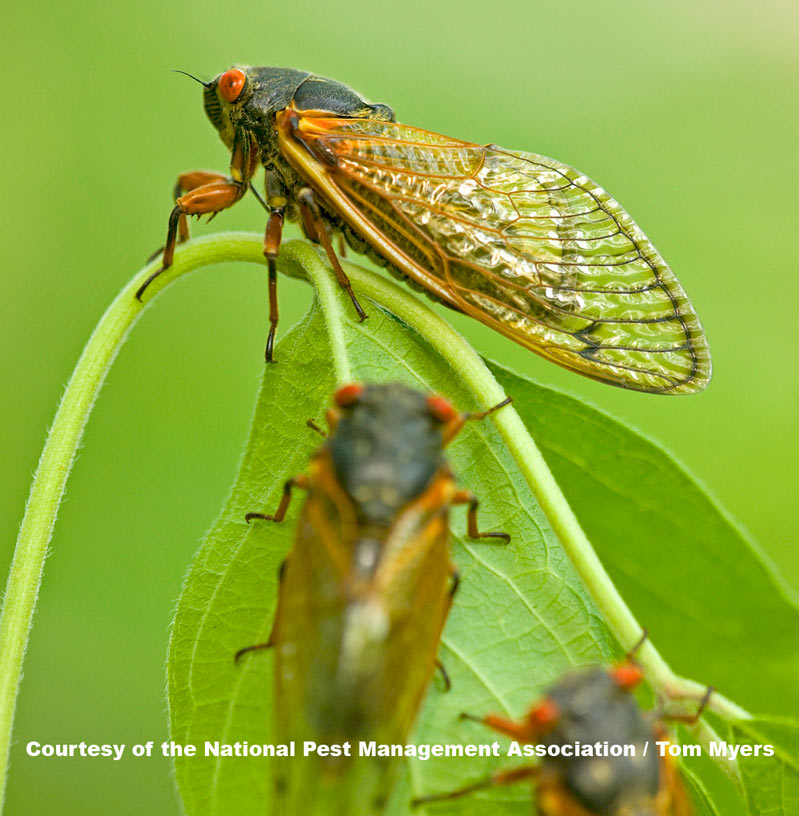Billions of Cicadas to Emerge Along East Coast

After 17 years of sucking roots underground, billions of cicadas are set to blanket East Coast skies, and trees, in their strident search for a mate.
Scientists and citizens have already reported some sightings of the crunchy creatures emerging from the ground, but the invasion of so-called "Brood II" cicadas is not yet full-blown.
There are several cicada species in the country and many emerge each year, but Brood II is one of the distinct populations that only mature every 13 or 17 years. These kinds of cicadas, known as periodical cicadas, are endemic to the eastern half of the United States. [6 Crazy Facts About Cicadas]
Shortly after hatching in tree branches, Brood II nymphs make their way back to the ground, burrowing in for a dark 17-year juvenile period until hormones kick in that turn them into adults. When the cicadas finally emerge out of the dirt, they shed their hardened exoskeletons and spend the next few weeks mating and laying eggs. Then the red-eyed insects all die, leaving their 2-inch-long (5 centimeters) bodies to litter the ground.
The winged insects do, however, make their short-lived act above the surface known. Males make species-specific mating calls and these chirping and clicking noises can be heard by females up to a mile (1.6 kilometers) away. Standing near an especially loud chorus of cicadas can be similar to standing near a motorcycle, with a racket reaching up to 100 decibels.
Citizen science projects like Radiolab's Cicada Tracker show where people have spotted or heard cicadas from Georgia to Connecticut. So far, the activity is somewhat scant, with most reports in the southern part of the population's range in states like North Carolina. Observers expect the cicadas, which are related to aphids and leafhoppers, to really start coming out once the soil temperatures reach 64 degrees Fahrenheit (17.8 degrees Celsius).
Entomologist Gene Kritsky, of the College of Mount St. Joseph in Cincinnati, said it's likely that there could be between 10 billion and 30 billion Brood II cicadas this year, though he anticipates it to be at the lower end of that range.
Sign up for the Live Science daily newsletter now
Get the world’s most fascinating discoveries delivered straight to your inbox.
Scientists estimate the number of periodical cicadas by counting their escape holes per square meter of ground. Kritsky said he recorded a high of 356 holes per square meter in 2004 (the year Brood X reigned), though most places had about 100 to 200 holes per square meter.
Tracking the cicadas' return could reveal new insights on land use and climate change, and it could provide details on the evolution of the broods, said Kritsky, who is especially interested to see if the cicadas emerge earlier than the 20th-century average.
The cicadas' long subterranean youth means it's difficult for scientists to study their life cycle. For example, Chris Simon, a cicada researcher at the University of Connecticut, told LiveScience last month that it's hard to confirm scientists' suspicions that many nymphs may die competing for food.
"They have digging claws that can dig through hard dirt, so they might be able to actually kill each other," Simon said. "We don't know because it's hard to watch them underground."
The delay also means studies take a long time. Kritsky, who is studying cicada reproduction potential, said, "I have one experiment that I started in the year 2000 and will not know the results until 2017." He also pointed out that the unusual cycle can connect us to history in a weird way; Thomas Jefferson once wrote about witnessing Brood II in 1775.
Follow Megan Gannon on Twitterand Google+. Follow us @livescience, Facebook & Google+. Original article on LiveScience.com.










